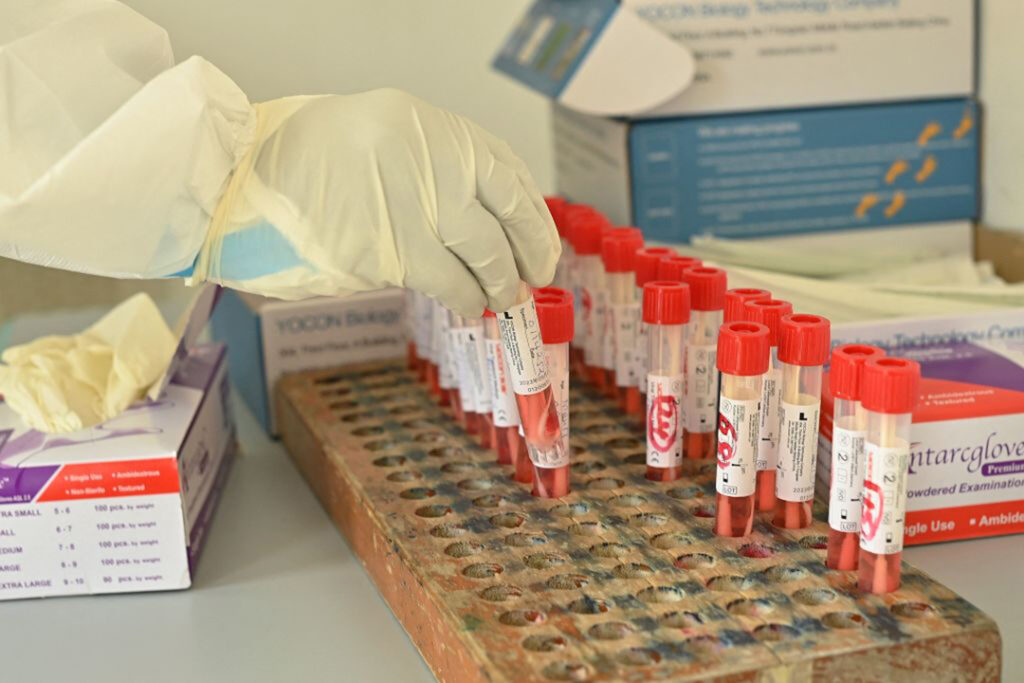ADF STAFF
Kenyan mathematician Dr. Shem Otoi Sam has become his country’s oracle of COVID-19.
Using a predictive model he developed, Sam found a way to forecast the rise and fall of infection waves, making him a kind of weatherman for the pandemic in western Kenya.
Sam, 39, goes on local radio to advise residents of western Kenya when they need to be more careful “by telling people — police, public education — ‘we’re going to have a peak. We don’t want to lose you,’” he recently told ADF.
As a survivor of COVID-19 himself, Sam knows personally how intense an infection can become and how important it is to prevent others from contracting the disease.
Sam’s modeling helped lay the groundwork for western Kenya’s Integrated Online Data System. The system helps Kenyan health officials monitor the availability of resources such as intensive care unit beds and high-flow oxygen so doctors and hospitals can know where to send patients. That has helped the region reduce the wave peaks, Sam said.
For all his success, Sam’s original choice of a profession was not mathematics. He wanted to be a doctor.
“I did not see myself being a mathematician,” he told ADF.
Unable to get into medical school at first, Sam enrolled in mathematics at Jomo Kenyatta University of Agriculture and Technology with plans to switch to medicine. That changed when he discovered statistics and modeling.
Today, he holds a Ph.D. in social statistics from the University of Nairobi.
He has used his modeling skill to study issues such as unemployment. However, he returns to questions related to health care, blending his original interest in medicine with his love of statistics.
Early in the pandemic, skeptics claimed COVID-19 would not affect Africa. Sam’s first attempt at modeling pandemic outcomes confronted that misinformation directly.
“When the first Covid-19 case came out in the country, I started scratching my head, comparing the Covid-19 infection rate, death rates and recoveries to other regions of the world,” he told Kenya’s The Nation.
His work showed that the continent was headed down the same path as the rest of the world when it came to COVID-19.
To expand his forecasting ability for COVID-19 waves, Sam adapted an existing mathematic model known as ARIMA, which stands for autoregressive integrated moving average. The adaptation let him extend ARIMA’s forecast capability from about one month up to eight, making it possible to predict infection waves farther into the future.
The goal was to help public health officials prepare hospitals and staff for coming waves.
Information about the resulting model, known as the Otoi-NARIMA Model, was published this year in the International Journal of Statistics and Applied Mathematics.
His adapted model factors in daily caseloads, positivity rates and average daily infections to predict when a wave will begin, peak and end.
“In my country, they used to say that there will be a wave in March, and that’s all,” Sam said.
Sam tried his first forecast shortly after Kenya’s first COVID-19 case appeared in March 2020. That prediction showed a wave running from June to September, a forecast that closely mapped with reality. He tested his model publicly for the first time in Homa Bay County, where it predicted a new wave beginning with the opening of schools in October 2020.
Sam said his model predicted Kenya’s third and fourth waves as early as February.
“It was telling me we were going to have two waves in 2021,” Sam said. His forecast showed a wave beginning on February 25, peaking on April 23, declining briefly then peaking again on June 26 and receding on July 10.
The fourth wave began in late July and will peak on October 4, according to the forecast. Sam told Kenya’s NTV he hasn’t run the model yet to forecast a fifth wave.
Sam is now working with western Kenya’s 14-member Lake Region Economic Block Committee of Eminent Persons to help the region’s health care system prepare for new waves and respond to them when they arrive. He was also invited to join Kenya’s National Modeling Committee, which supports other committees working on vaccination and medical oxygen supplies.
Khama Rogo, chairman of the committee, told ADF the committee fully supports Sam’s work and is grateful for his commitment to Kenya, Africa and the world.
Forecasting has helped reduce the overall impact of COVID-19 in western Kenya, Sam said.
“We’ve been experiencing low peak intensity because people are forewarned. They [hospitals] prepare in advance, so they’re not overrun,” Sam said. “At the same time, my model has helped save not only lives but livelihoods.”


1 Comment
I’m so impressed of your dedication to serve humanity.